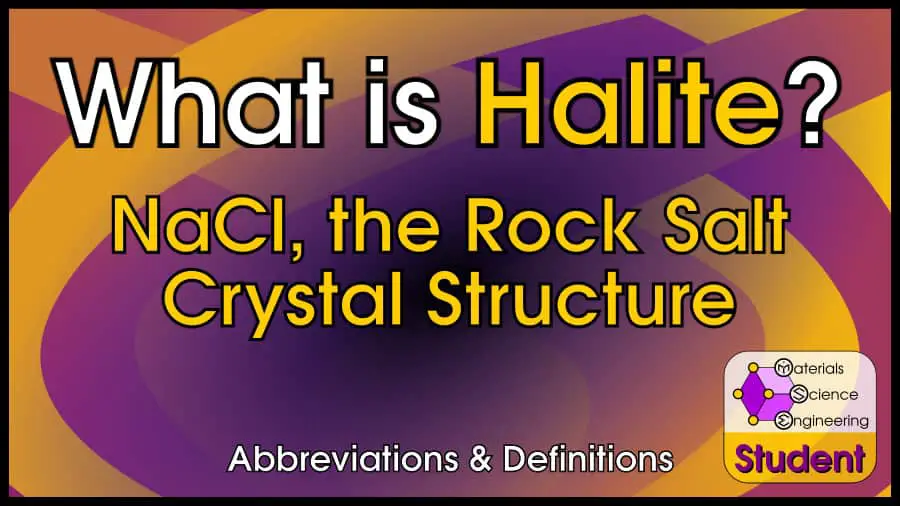
Halite is the fancy geology or crystallography name for sodium chloride (NaCl), which may also be known as “rock salt” or “table salt.”
In materials science, we usually use the term “halite” or “rock salt” when we refer to the generic crystal structure:
The halite crystal structure forms a bunch of cubes where atom A (sodium in NaCl) and atom B (chlorine in NaCl) always touch the other type of atom.
This may look like a variation of the simple cubic unit cell, but if you consider the symmetry of the two atoms, it’s actually two interpenetrating FCC lattices. Therefore, the halite crystal structure has the FCC Bravais lattice.
The halite crystal structure has Pearson symbol cF8, Strukturbericht B1, space group #225 or Fm-3m, and prototype NaCl.
According to AFLOW Library of Crystallographic Prototypes, other compounds with the rock salt crystal structure are AgCl, BaS, CaO, CeSe, DyAs, GdN, KBr, LaP, LiCl, LiF, MgO, NaBr, NaF, NiO, PrBi, PuC, RbF, ScN, SrO, TbTe, UC, YN, YbO, and ZrO [1].
You may also be interested in some related terms.
Related Terms:
HCP
DHCP
FCC
BCC
BCT
Zincblende
Diamond Cubic
Perovskite
References and Further Reading
Michael J. Mehl, David Hicks, Cormac Toher, Ohad Levy, Robert M. Hanson, Gus Hart, Stefano Curtarolo, The AFLOW Library of Crystallographic Prototypes: Part 1, Computational Materials Science, Volume 136, Supplement, 2017, Pages S1-S828, ISSN 0927-0256,
https://doi.org/10.1016/j.commatsci.2017.01.017.
